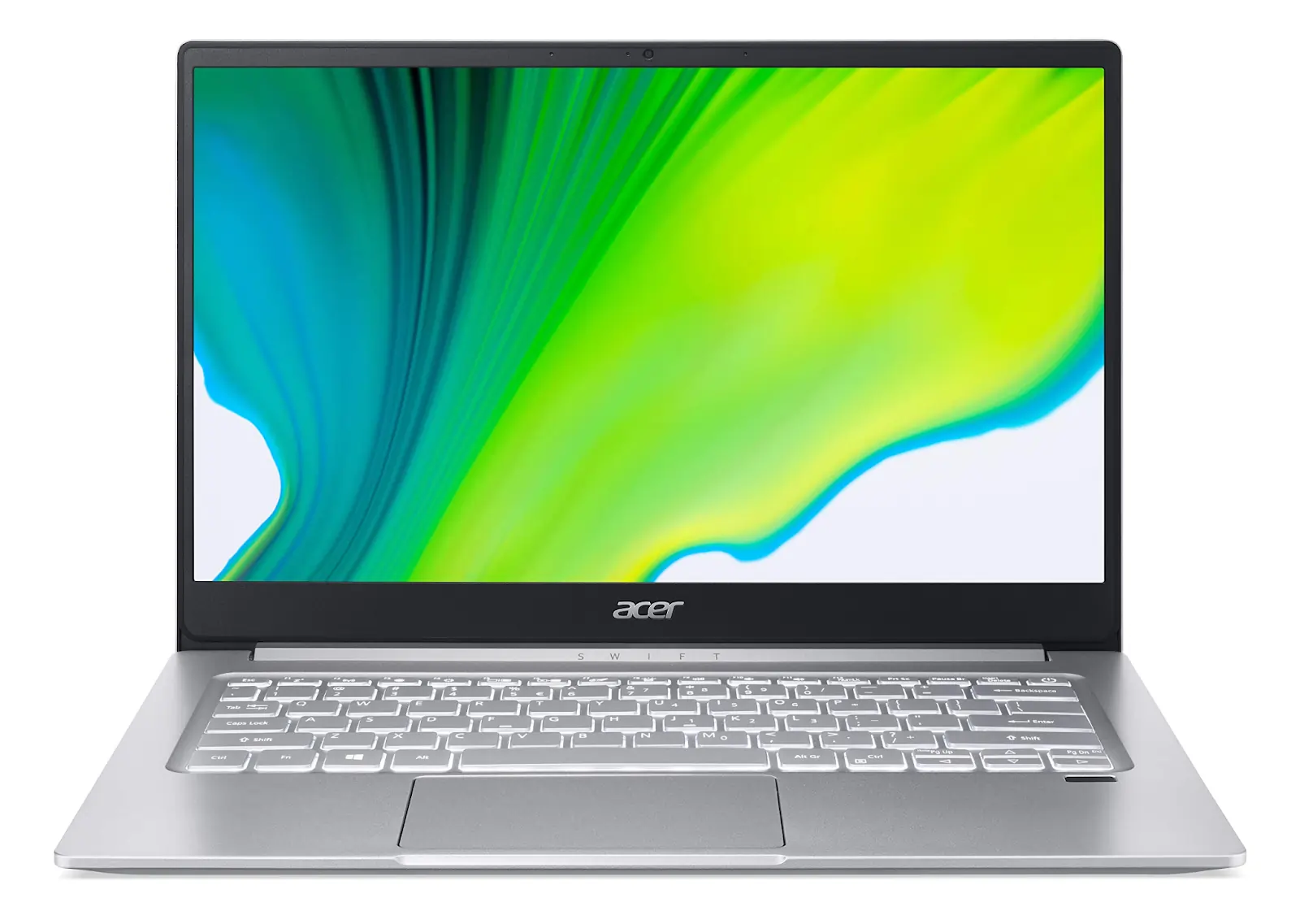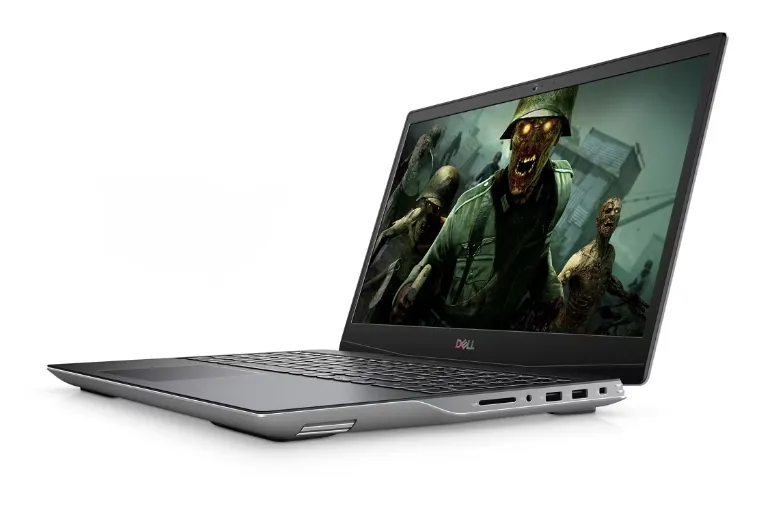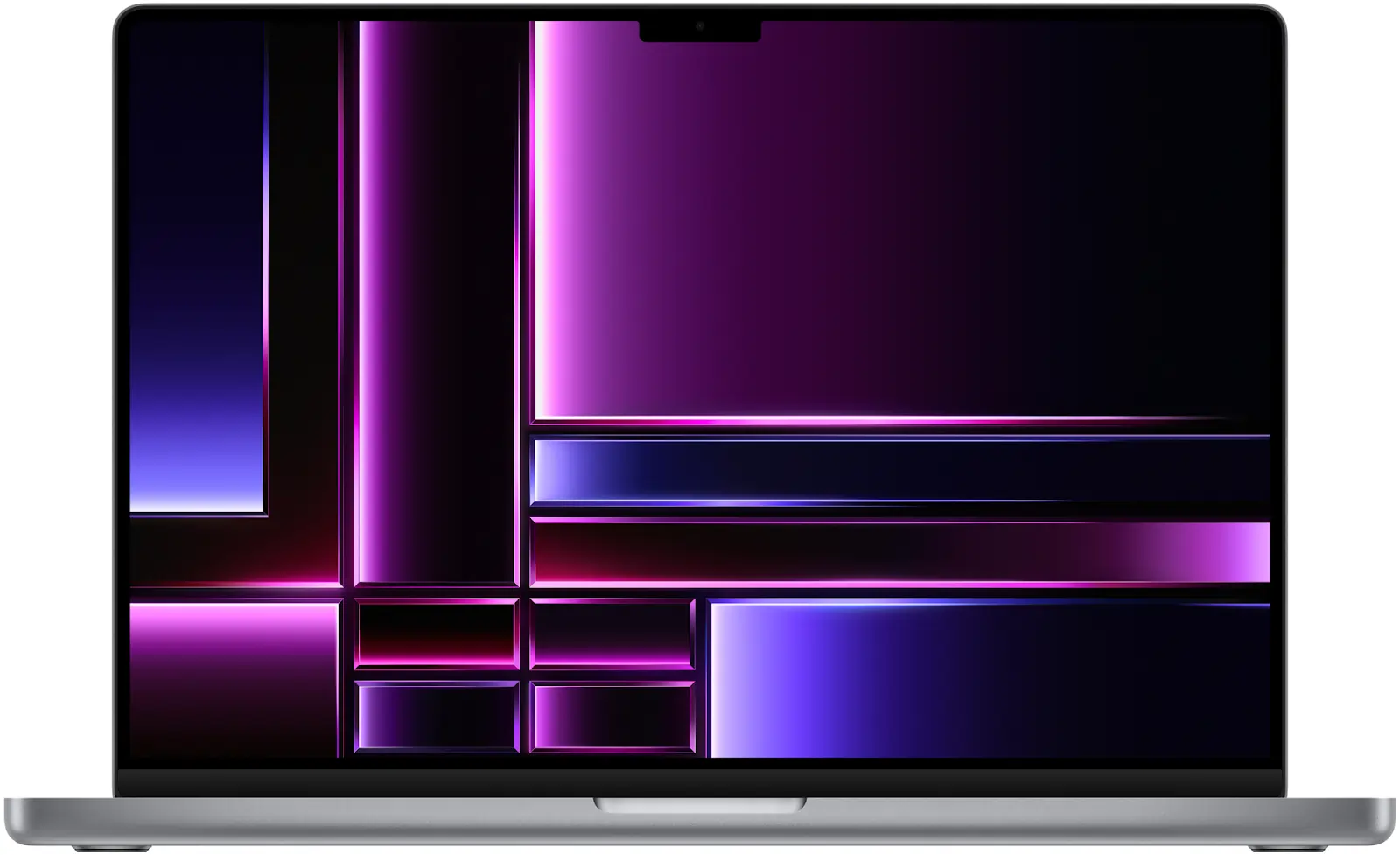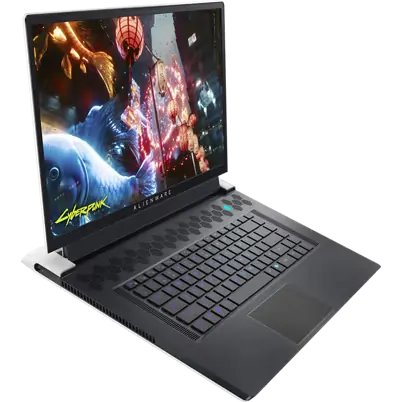Table of contents:
Whether video editing is a hobby or your primary source of income, it's crucial to invest in a high-performance laptop.
But do you really need all the bells and whistles available in those top-of-the-line models?
Odds are, no, you don’t.
In this article, we’ll walk you through the most important factors to consider. Then, we’ll break down the 9 best laptops for video editing based on your budget.
What laptop do you need for video editing?
The best video editing laptop for you depends on the type of videos you edit.
Consider these factors:
- Video resolution
- Video length
- Special effects and graphics
- Color accuracy
You'll need a fast, powerful laptop if you edit long-form videos in 4K resolution, add numerous special effects, and want your videos to capture real-world colors accurately. We’ll refer to this as heavy editing.
On the other hand, if you edit short-form videos in HD resolution, add fewer special effects, and don’t mind slight color inaccuracy, you can get away with a lower-end laptop. We’ll refer to this as light editing.
Below, we’ll outline the necessary specs for different editing needs—and we’ll decode all the relevant computer hardware jargon for you in the process.
Laptop requirements for video editing
For video editing, you’ll need to optimize the following five basic aspects of your system. Keep in mind that if you have a Windows laptop, you can upgrade your system at any time to bring it up to these specs. You may not need to buy an entirely new computer.
Processor
Your computer’s processor, or its central processing unit (CPU), is the main component responsible for processing requests and completing tasks. Think of it as your computer’s brain.
The spec to look for in a CPU is speed. The heavier your editing, the faster your CPU needs to be.
Your CPU is composed of cores—individual components that work simultaneously but independently on different tasks.
A CPU with more cores is like a team with more people: it can complete tasks more quickly. For heavier editing, aim for 8 cores; for lighter editing, 1–2 cores are sufficient.
The speed with which your processor can complete a task is called clock speed. For heavier editing, choose a CPU with a clock speed of at least 3.2 GHz; for lighter editing, you’ll only need around 2.0 GHz.
Memory
Computer memory is usually simply called RAM, which stands for random access memory.
RAM is your computer’s short-term memory. When you’re actively working on a task, your computer holds all information necessary for that task in its RAM. It’s like having everything you need in arm’s reach—you can get to it quickly.
If you don’t have enough RAM, your computer has to store the extra information on your hard drive instead. Trying to complete a task on your computer with insufficient RAM is like having to walk across the room to get what you need.
Different video editing software options have different RAM requirements, but in general, aim for 4GB of RAM for lighter editing and up to 32GB for heavier 4K editing.
Graphics Card
Your computer’s graphics card, also known as its video card or GPU (graphics processing unit), works in tandem with your CPU to complete your video editing tasks.
The purpose of a GPU is to offload some of the CPU’s tasks so the CPU can focus on other things. GPUs specifically handle graphics and special effects.
Like your CPU, your GPU stores the information needed for a task in your computer’s short-term memory (RAM). The piece of your computer’s RAM dedicated to your GPU is called its VRAM (video RAM) or GPU memory.
The more VRAM your computer has, the more powerful its GPU will be. For heavy video editing, aim for 6–8GB of VRAM. For light editing, 1–2GB is enough.
Storage
It’s easy to confuse RAM and storage. After all, RAM is short-term storage. But when you see “storage” listed as a laptop spec, it’s referring to long-term storage.
There are two types of storage: HDD (hard disk drive) storage and SSD (solid state drive) storage.
You probably know HDDs as hard drives. These are essentially spinning metal disks in your computer that store your information. Compared to SSDs, HDDs give you more storage space for the same price.
But SSDs allow you to do tasks much more quickly. That’s because, unlike hard drives, SSDs don’t have any moving parts, so there are no mechanical delays when a user inputs a command.
If you edit HD (1080p) or UHD (4K) videos, an SSD is a must.
One way to cut costs is to buy an SSD with less storage in conjunction with an HDD with more storage. In fact, some editing software, like Adobe Premiere Pro, will only install on a hard drive but require an SSD for heavy video editing.
If you’re using a lower-end laptop or only doing light editing, you may not need an SSD.
Display
“Display” refers to your laptop’s screen. There are five basic display factors to consider:
- Resolution
- Color accuracy
- Color gamut
- Screen brightness
- Dynamic range
Resolution
First, you’ll want your screen resolution to match the resolution in which you edit your videos. Otherwise, you won’t be able to see all of the detail in your videos, which will make it difficult to edit accurately.
So if you make 4K resolution videos, you’ll want a 4K laptop screen.
Color Accuracy
Next, you’ll want as much color accuracy as your budget allows. Laptops with higher color accuracy will be more expensive.
You can measure color accuracy with a Delta E score, representing the difference between the colors displayed on the screen and the video’s original colors. The closer to 0, the higher the color accuracy.
Color Gamut
You’ll also want a screen that depicts a wide range of colors. We refer to that as color gamut and measure it with a sRGB (standard red green blue) percentage. Higher percentages indicate a higher color gamut.
Counterintuitively, these go above 100%. In fact, you should aim for at least 100% sRGB.
Screen Brightness
The more detailed your edits are, the brighter you’ll need your screen to be.
People measure screen brightness in nits. Yes, that’s a unit of light measurement—not to be confused with lice eggs.
A good standard to aim for when it comes to screen brightness is 250 nits.
Dynamic Range
Last, it’s ideal to have an HDR (high dynamic range) screen.
Dynamic range refers to the range of dark to light colors. On an HDR screen, the blacks are very dark, and the whites are very bright. Again, this helps with accurate color editing.
Now that you know what you’re looking for, we’ll give you nine specific video editing laptop recommendations for different budgets.
Best Video Editing Laptops for Low Budgets
As you’re reading through this list, keep in mind that most companies let you choose from numerous options when purchasing a laptop. If the configuration we’ve chosen below doesn’t align with your needs, a different configuration of the same device might.
1. Acer Aspire 5

- Price: $353
- GPU: AMD Radeon Vega 3
- RAM: 4GB DDR4
- Storage: 128GB SSD
- Processor: 3.52 GHz Ryzen 3 3200U
- Display: 1920 x 1080
The Acer Aspire 5 is an extremely budget-friendly option with a high-definition screen and powerful SSD storage, making it great for video editing. While it isn’t quite fast enough for heavy editing, it’s perfect for content creators just starting out.
Pros
- Fast enough for light editing
- Lightweight
- Lots of features for the price
- Backlit keys
- Good screen dynamic range
Cons
- Volume output is too quiet
- ACER support is not always responsive
Best for: Creators who only need to do occasional or light editing
2. Acer Swift 3

- Price: $584.99
- GPU: AMD Radeon
- RAM: 8GB
- Storage: 256GB SSD
- Processor: AMD Ryzen 5 4500U
- Display: 1920 x 1080
While more expensive than the Aspire 5, the Acer Swift 3 has twice the memory, twice the storage, and a higher-end processor. That means you can use it for slightly heavier video editing, though you’ll likely be limited to editing in HD.
Pros
- Good battery life
- High-definition screen resolution
- Inexpensive
Cons
- Low color accuracy
- GPU can’t handle 4K videos
- Low display brightness
Best for: Creators doing light editing in no more than HD resolution
3. Dell Inspiron 14

- Price: $579.99
- GPU: AMD Radeon
- RAM: 16GB
- Storage: 512GB SSD
- Processor: AMD Ryzen 7 5825U
- Display: 1920 x 1200
Similar to others at this price point, the Inspiron 14 is best suited for light video editing. However, you get a lot of bang for your buck with this one: it has the same basic specs as Dell laptops twice the price. If you’re looking for the bells and whistles, this isn’t for you, but it’s a solid budget option.
Pros
- Robust internal components
- Good battery
- Better display than competitors
- Responsive keyboard and trackpad
Cons
- Low screen brightness
- Low volume output
- Picking up the computer can cause unintended trackpad clicks
Best for: Individuals who only need the basics and don’t mind a few quirks
Best Video Editing Laptops for Mid-Budgets
While these laptops aren’t top-of-the-line, there are a lot more options at this price point. You’ll also notice a significant jump in quality from low-budget to mid-budget devices.
4. Asus ROG Zephyrus G14
.webp)
- Price: $1,099.99
- GPU: AMD Radeon RX 6700S
- RAM: 16GB
- Storage: 1TB SSD
- Processor: AMD Ryzen 9 6000 Series
- Display: 2560 x 1600 (Wide Quad HD)
The ROG Zephyrus G14 has twice the storage of the largest-capacity budget laptop we reviewed, making it ideal for both video editing and gaming. Its high-definition screen resolution gives it beautiful graphics and makes detailed editing possible.
Pros
- Clean design
- Powerful performance with minimal heat and noise
- Very portable
Cons
- Potential quality control issues
- Screen cannot accurately display 4K videos
Best for: Either gamers or content creators who want a powerful, lightweight, portable laptop
5. Lenovo Legion 5
.webp)
- Price: $1,139.99
- GPU: NVIDIA GeForce RTX 3050 Ti
- RAM: 8GB
- Storage: 512GB
- Processor: AMD Ryzen 7 5000 Series
- Display: 1920 x 1080
While the Legion 5 is slightly more expensive than its competitors, it consistently performs better. And while its memory is lower than some, you can easily upgrade it.
Pros
- Sleek, minimalist design
- Fast
- Great performance for the price
Cons
- Wi-Fi problems
- Glitchy trackpad
- May need to upgrade the RAM
- Lower-resolution screen than some
Best for: Creators who want a powerful laptop at a mid-level price and don’t need to record in 8K
6. Dell G5 15 SE

- Price: $958.12
- GPU: AMD Radeon RX 5600M
- RAM: 8GB
- Storage: 256GB SSD
- Processor: Ryzen 5 4600H
- Display: 1920 x 1080
Similar to the previous option, you may need to upgrade the G5 15 SE's storage and RAM if you want to edit 4K videos. Aside from that, this is a solid, simple mid-range computer.
Pros
- Good battery life
- Comfortable keyboard
- Well-made
- No bloatware
Cons
- Low color accuracy
- Not much memory or storage
- Red light under keyboard can make it difficult to see the keys
- Runs hot
- Screen doesn’t show up well outdoors
Best for: People who don’t need to edit outdoors or do detailed color editing
Best High-End Video Editing Laptops
If budget isn’t a consideration for you, read on for the best video editing laptops your money can buy.
7. MacBook Pro 16 M2 Max

- Price: $3,499
- GPU: Apple M2 Max
- RAM: 32GB
- Storage: 1TB SSD
- Processor: Apple M2 Max
- Display: 3456 x 2234
Apple’s MacBook Pro is consistently one of the top-ranked video editing laptops, and the MacBook Pro 16 M2 Max, just released in January, is no exception. It has a whopping 12 CPU and 38 GPU cores and you can upgrade it to 96GB of RAM and 8TB of SSD storage. You can even get it with a pre-installed Final Cut Pro, one of the most popular editing software options.
Pros
- Top of its class in performance
- Great battery life
- Amazing screen resolution
- Extreme dynamic range (XDR) screen
- Highly responsive keyboard and touchpad
Cons
- Heavy
- Very expensive
- Lack of ports
- Difficult to upgrade after purchase
Best for: Professional content creators who want to do the heaviest video editing
8. Asus ProArt Studiobook 16 OLED
.webp)
- Price: $2,684.99
- GPU: Nvidia GeForce RTX 3070
- RAM: 16GB
- Storage: 2TB SSD
- Processor: Intel Core i7-12700H
- Display: 3840 x 2400
Catered to creators who really care about color, the ProArt Studiobook 16 OLED meets Pantone-validated color accuracy standards, claims 100% of the color gamut, and has above a 4K screen resolution. You also get twice the storage of a new MacBook Pro at a much lower price.
Pros
- 4K OLED display
- 2TB of storage
- Built-in programmable dial on the keyboard for controlling editing software
Cons
- Battery life
- Expensive
Best for: Creators for whom video color accuracy is paramount
9. Alienware X17 R2

- Price: $3,849.99
- GPU: Nvidia GeForce RTX 3080 Ti
- RAM: 16GB
- Storage: 1TB SSD
- Processor: 12th Gen Intel Core i9-12900HK
- Display: 2560 x 1440
The most expensive option on our list, the Alienware X17 R2 is a powerful and pretty gaming and video editing laptop. You can upgrade to 64GB of RAM and 4TB of SSD storage or downgrade to make it slightly more affordable.
Pros
- Customizable
- Fantastic audio output
- Powerful processor
- Slim design
- Responsive keyboard
Cons
- Expensive
- Runs hot
- Loud keyboard and fans
- Symbols on the number keys are not backlit
Best for: Content creators who need a powerful video-editing laptop and enjoy the gamer aesthetic
Tips for choosing the best video editing laptop
We’ll leave you with a few pro tips to help you choose the right laptop for you and get the most out of whatever you choose.
Upgrade Strategically
The most influential computer components for video editing are your CPU, GPU, and RAM—in that order. All three make a big difference in your device’s speed and performance.
So if you have limited money to spend, use it to upgrade those.
Prioritize Features When Purchasing
If you find your dream laptop but it’s missing a few features, keep in mind that you can add hardware after purchase, such as ports, card readers, or a webcam.
Instead of focusing on whether a device has these components, make a purchasing decision based on hardware that you can’t easily add or change, such as the screen or battery.
Ensure Software Compatibility
Before purchasing a video-editing laptop, do a little research on recording and editing software. Every software has different laptop requirements, so it’s important to ensure your device meets the software requirements you plan to use.
Here are a few popular editing software options, both high-end and lower-end:
- Adobe Premiere Pro
- Final Cut Pro
- Descript
- DaVinci Resolve
- Wondershare Filmora
- iMovie
- Hitfilm Express
- Shotcut
For professional-quality videos, pair one of these editing tools with recording software like Riverside.
Riverside is a user-friendly tool that lets you record lossless, 4K video from your browser. What sets our tool apart from the rest is that your recordings don’t depend on your internet connection.
While other recording platforms like Zoom or Skype record over the internet (and can easily become blurry or glitchy if your connection is interrupted), Riverside records each participant’s video locally to their own devices. These separate tracks—each recorded in professional-quality, crystal-clear audio—give you much more control in post-production.
When you’re ready to edit, Riverside’s text-based video Editor makes editing accessible to anyone. It’s ad easy as editing a doc! Riverside creates highly accurate Ai transcriptions in over 100 languages which you can use to:
- Remove and cut out audio and video: Any text you delete in your transcript, removes the matching audio and video in your recording. You’ll get precise edits with half the time and effort.
- Navigate through your recording: Want to work with a specific quote from your transcript? When you select text in your transcript, the timeline playhead will jump to the same point in your recording.
- Search for specific phrases in your video: Find that certain moment without hours of rewatching your whole recording! Use the search bar and the editor will highlight and mark your search term in your transcript and recording timeline.
Riverside also offers tools in the editor for:
- Stitching together locally-recorded stracks
- Auto fine-tuning
- Customizable backgrounds and layouts
- Creating bite-sized Clips for social media at the touch of an Ai button
You also don’t have to worry about files going out of alignment. Riverside’s multitrack sync ensures your files consistently stay in sync.
To use Riverside, you’ll just need a PC running at least Windows 7 or a Mac running at least MacOS Sierra (10.12.0). It’s also compatible with both iPhone and Android, but note that the editor is only available on desktop.
FAQs on Video Editing Laptops
Which is the best laptop for video editing?
Apple’s MacBook Pro is the best laptop for video editing. The newest model, released in January of this year, has the new M2 Pro or M2 Max chip, which gives the device enough power for even the heaviest editing. And its high-resolution XDR screen allows you to edit minute details in your videos.
You can also purchase your MacBook Pro with a pre-installed Final Cut Pro, one of the most popular advanced editing software options.
What laptop do YouTubers use for editing?
Many YouTubers use a MacBook Pro for editing. That’s partly because many YouTubers record their videos on an iPhone, and it’s convenient to AirDrop them straight onto their MacBook for editing. They also often prefer Final Cut Pro over other editing software, and it’s only compatible with Apple products.
Which laptop is best for 4K video editing?
While Apple’s MacBook Pro is consistently the #1-ranking laptop for all video editing, any laptop with a powerful processor, sufficient RAM, and a 4K screen works well for 4K video editing. Minimum laptop requirements for 4K video editing will depend on your editing software.
Do you need a powerful laptop for video editing?
You need a powerful laptop if you’ll be doing serious, high-resolution video editing, and it’s ideal to have a powerful laptop even for light, low-resolution editing. You can get away with a less powerful laptop for light editing, but your videos may take a long time to render.
Once you’ve chosen the perfect laptop for your needs, simply register to use Riverside's recording software and get started creating studio-quality video content.


.webp)











.webp)
.webp)
.webp)


